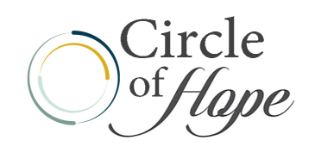
The actual cost of heroin addiction isn’t just in the cost of the drugs, however. Heroin can alter a person’s moods and even brain function. Heroin is a dangerous and addictive opioid that has made its way into many walks of life. It is extremely easy to get ahold of in city centers, thanks to broad distribution from criminal gangs. While law enforcement is trying its best, it is challenging to stay ahead of a problem of this caliber. Many of the people who are currently addicted to heroin usually start off on another drug. It’s not uncommon to come across someone suffering from heroin dependency that initially started off on prescription drugs. Once that source dried up or became too expensive a habit to maintain, they changed their tastes to heroin. Heroin addiction has no particular class or races it preys upon. It’s an equal-opportunity drug that has seen people from all walks of life fall prey to its allure.
Even though the drug is affordable in comparison with others, heroin addiction can be an expensive habit. The drug business, on the whole, is a very profitable one, or else the gangs involved in trafficking and selling wouldn’t be interested in it as much as they are. The street cost of heroin may vary from place to place, with some areas having more suppliers, driving down the cost of the product, and other regions having higher prices due to low availability. Quality of the substance is also a factor to consider, as many street-level versions of the drug are cooked up in converted kitchens. The final product is usually of low quality, fetching a lower market price. Recent seizures by law enforcement have revealed a source of pure heroin in Mexico that brings loads of high-quality heroin into the US. Even at this level of quality, the price of the drug is not exorbitant.
As a person becomes dependent on the substance, they might start spending less time in productive endeavors and instead use that time to seek out new sources of the drug. Their productivity at work may drop, and they may stop taking care of their personal hygiene. If they get sick, it would cost them far more to get well, if it’s even possible to do so. Heroin is an expensive habit, but not just in terms of how much one spends on it, but how it affects one’s ability to earn.
How Much Does Heroin Cost?
Heroin’s wide availability usually drives down the cost of the drug, as mentioned before. Most economists would be able to define the law of supply and demand. If there is a lot of the substance on the market, the price of that substance decreases. If there is a shortfall of products, the price goes up. Since heroin is such a simple drug to cut in kitchen-counter labs, there’s always an excess of the product in circulation. On average, it may cost anywhere between $10 to $20 per bag of the substance. While this price is relatively affordable, compared with other drugs like cocaine, the real trouble stems from how addiction works on the human body.
When someone is addicted to heroin, they need to consume massive amounts of the drug daily. If they fail to meet this obligation, they start getting withdrawal symptoms. These symptoms can have nasty effects, such as nausea and vomiting to headaches, and even hallucinations. To avoid them, a severely addicted person may need to buy as many as eight to ten doses of the drug a day. Considering the street cost of $10 to $20 a bag, the price quickly mounts up. Heroin for a user like this can cost anywhere between $150 and $200 a day, depending on the locale. When we extrapolate for the entire year, this habit could cost a person anywhere between $54,000 and $73,000 a year. For some people, that’s as much as they earn over twelve months. Heroin doesn’t usually start as a person’s drug of choice, but its attractive price can lead a user into thinking they’re saving money on their drug habit.
Heroin Price vs. Prescription Opioids
As mentioned before, a significant amount of people who get involved with heroin start with prescription opioids. With many of these opioids available over-the-counter with a signed doctor’s note, sometimes people don’t even pay for their medication. Depending on the type of health insurance a person has, they might collect their medication for free and abuse it. The hidden cost of drug abuse is more apparent in individuals who have to buy their own medication. The price of these drugs skyrockets when someone attempts to buy them on the street. Some of the more common prescription drugs in circulation are:
- Oxycodone: $6 with a prescription, $30-$40 on the street
- Hydrocodone (Vicodin): $1.50 at pharmacies with a prescription, $5 to $10 on the street
- Fentanyl (patch): $9 with a prescription, $40 from a street dealer
- OxyContin: prescription costs are around $6 per pill, with street versions going for $60 to $80
When the street costs of these drugs are considered, it’s easy to see why heroin becomes a cheaper and more desirable alternative. Again, the added costs of taking prescription pills become massive over time, especially if a person takes several of them a day. Consider that ten doses of Oxy will cost almost four times that of ten doses of heroin. In some cases, users mix their heroin with other drugs to make for a more intense high, increasing the total cost per dose.
Cheap Heroin Prices and Fentanyl Risks
Heroin and fentanyl make for a typical combination of drugs. On its own, fentanyl can be pretty inexpensive. However, mixing it with heroin allows a user to increase the life span of both of the drugs. Heroin and fentanyl produce euphoric effects on the human brain through their interaction with brain chemistry. However, it’s much easier to build up a tolerance for fentanyl, requiring a person to take more (even in concert with heroin) to achieve similar effects. Traffickers have realized that they could also extend their supplies by selling heroin laced with fentanyl to their clients. Unfortunately, many of them don’t tell their buyers that they’re getting pure heroin along with fentanyl.
But why is heroin mixed with fentanyl so dangerous? Fentanyl is even more potent than heroin, and even a bit more than the recommended dose could lead to an overdose. Overdoses may occur without anyone to witness it, depending on where and with whom a person uses heroin. This isolation could quickly lead to complications, and in many cases, death. Even if a person does have someone nearby to call for emergency services, the cost of these services is massive.
Health insurance will cover most of the costs for some persons, but this isn’t possible in most cases. Many people who use heroin and fentanyl can only afford the most basic of insurance due to economic concerns. This insurance is usually affordable through monthly payments but requires a lot of money if something goes wrong.
Social Costs of Illicit Substances
The cost of heroin addiction isn’t only in how much someone pays for the substance. It transcends the monetary cost and impacts people’s lives as well. There are several social costs that no one mentions because they don’t factor into a tangible value like the monetary cost of goods. Illicit substances like cocaine and heroin have a far more profound impact on societies where they circulate. Unfortunately, it’s usually in the most economically depressed regions of the country that these drugs truly take hold. Among the unmentioned social impact of these drugs are:
- Higher school dropout rates: Many times, when a teenager or young adult is addicted to a substance, they stop performing academically. Instead, they spend all their time searching for the substance and even dealing it to get extra money. The inevitable fallout is failing out of school or being expelled for selling illicit substances.
- Job Issues: When a person becomes addicted to a substance, their performance in their job will see a marked decrease. There will likely be a lower quality of work when they do show up at the office. Suspensions, probation, and all sorts of things may play into the person’s addiction. Because of how the condition works, a person won’t be bothered by this change in attitude toward job performance.
- Marriage and Relationships: Most times, when a spouse finds out that their significant other is a regular drug dealer, they try to help them. Failing that, the only option would be to leave. Divorce is a common occurrence in families that have one parent who’s a regular drug dealer. Additionally, parents who use drugs aren’t likely to be granted custody of their kids.
- Medical bills and insurance rates: The riskier a person is, the more they’ll have to pay for insurance to cover them. Medical bills for an ER visit can also add up significantly, especially if a person’s insurance is at the lower end of the scale.
When these costs are factored in, it’s easy to see how illicit substances can cause severe damage to a person’s life and interpersonal relationships.
Actual Costs for Heroin Addicts
So, what does all this cost the average heroin user? What is the amount of money they typically spend on drug use and the associated costs? Most individuals who use heroin get their money through their regular jobs. A small amount sells heroin and other drugs on the side to be able to afford their habit. Many regular users are also in well-paying jobs, or at least start in this economic bracket. The cost of heroin to these individuals might not seem like a severe impact on their income, so they are more than happy to continue using. A smaller but significant portion of users also relies on friends and family to help them buy drugs. Some of these individuals are underaged, but many of them are simply unemployed.
As is typical, heroin responds to the cost of buying prescription drugs for many of these individuals. Not happy with spending over $100,000 in prescription drugs on the street, heroin’s price tag is a bit more acceptable. When costs need to be considered, the price of $20 a dose doesn’t seem like such a huge deal compared with $30 a pill. High-quality heroin is now easier and cheaper than ever before. A typical user will spend around $60,000 a year on heroin, depending on the level of their addiction. The heavily addicted individuals will likely spend a lot more to support their habit. While monetary spending is a decent way to compare the cost of the drug, there are other factors that one must consider.
Addiction Costs a Loss Of Freedom
Freedom comes in many forms. Unfortunately, addiction is the ultimate loss of independence, as it makes someone utterly dependent on a drug. When a person is addicted, they require a significant amount of the drug over time to maintain their habit. Addiction stems from a person’s dependency. The more a person consumes the drug, the more they become dependent on it to function normally. Tolerance also factors into the equation. As a person becomes dependent on the drug, their tolerance grows, meaning they need more to get the same feeling of euphoria. When a person is addicted to a substance, their mind is trained on one thing only – when next they’ll be getting a dose.
This single-minded purpose isn’t an accident. Addiction is a brain disease that preys on a person’s dependence to push them towards making bad and illogical choices. While a person who isn’t addicted will immediately spot why doing something is wrong, the moral compass for an addicted person blurs significantly. Their actions are entirely out of character for their sober selves because they are slaves to the feeling that the drug gives them. There is no worse loss of freedom for an individual than the loss of agency. In this case, addiction removes that agency completely, leaving a person with only one goal in life and no care for the consequences. In terms of cost, it is the ultimate price to pay.
Treatment For Heroin Addiction
Heroin addiction treatment can help individuals who are suffering from addiction. Addiction treatment at most centers starts with a small interview that allows the staff to gauge the level of addiction. They may suggest additional treatments, depending on if there are co-occurring mental disorders along with the addiction. Otherwise, they use this interview to craft a plan that deals with a patient’s unique circumstances. This plan starts with detoxification and continues to therapy and rehabilitation. The aim is to help the person deal with their urges healthily and positively.
Detox follows the meeting. Detoxification is a medically supervised process of withdrawal. Withdrawal symptoms will occur, but their intensity will vary depending on how long the person may have used the drug and how far their addiction extends. Medical staff will be on hand to deal with any problems that might crop up during the withdrawal process. After detox, the patient can experience either inpatient or outpatient treatments. These treatments vary in their approach but have the same goal – breaking psychological dependence on the substance. Many facilities also offer long-term support for their patients.
Costs Of Treatment and Insurance Coverage
Treatment costs may vary, depending on the facility that a person chooses. Insurance coverage for heroin addiction treatment also varies, depending on the provider and the type of insurance. Heroin addiction is a potentially life-threatening condition, and some health insurance covers treatment of these conditions as a part of their client contracts. Some corporate health insurance packages also cover heroin addiction recovery. Unfortunately, not all health insurance covers addiction recovery, meaning that a person might need to find alternative payment methods. Most addiction centers allow for a tiered payment plan, while others defer payment until the person is already recovered and can start paying towards their rehab.
Other Options and Resources For Care
Other options like support groups and twelve-step plans also exist, but they rely on treatment centers’ detoxification. These support groups are usually best for individuals who have completed detox and inpatient/outpatient treatment but still feel the urge to use the drug. They are structured to help individuals come to terms with their addiction and use peer support as a method of keeping a recovering person engaged.
If a person needs addiction treatment, the best option is a professional treatment center with a flexible payment plan. Circle of Hope is a detox and treatment facility that seeks to offer clients the best recovery experience they can have. Additionally, we provide trained therapists that have spent a lot of time helping others come to terms with their addiction and leave it behind. If you’d like to experience Circle of Hope’s individual approach to treatment, contact us today, and we’ll set up a meeting. We’d be glad to help you on the road to recovery any way we can.


